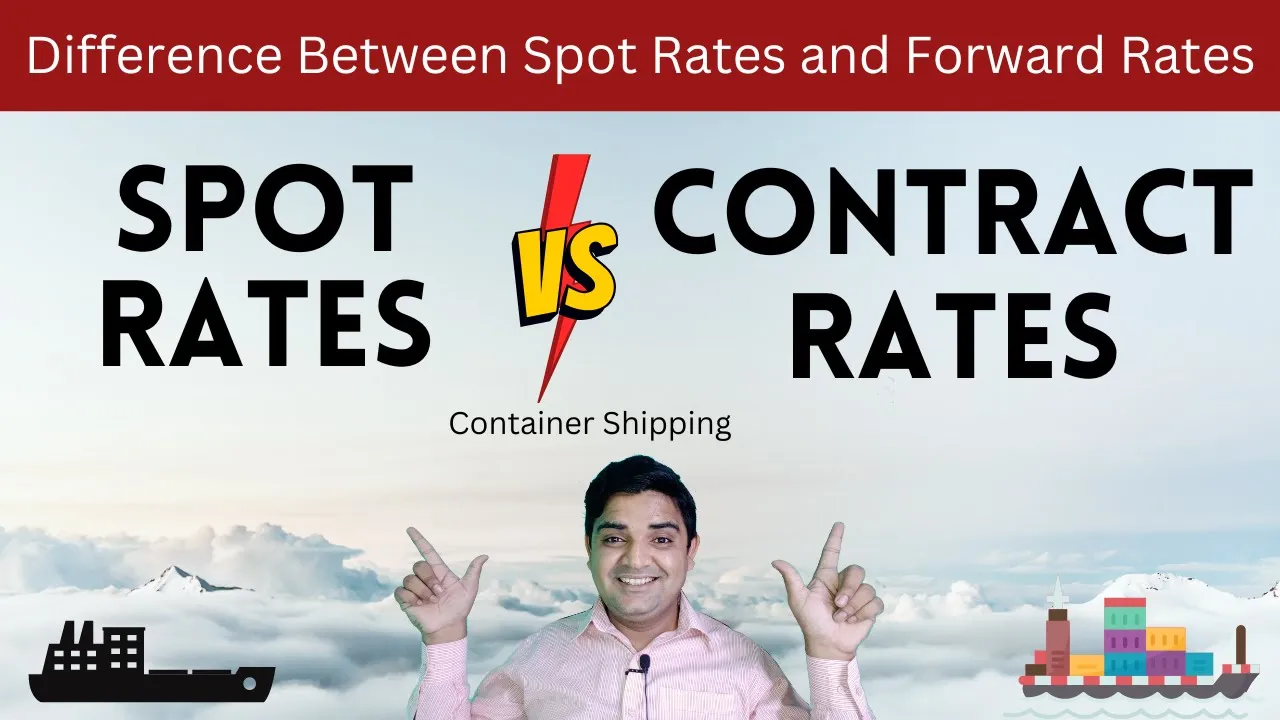
What is the meaning of the Spot Rate and Forward Rate, and what is the difference between the Contract Rate and the Spot Rate? If you want the answers to these questions so you are in a right place.
What are Spot Rates in Container Shipping
A shipper pays a one-time cost known as a spot rate, often referred to as a spot quote, in order to transfer a load (or shipment) at the going rate on the freight market. Spot rates are a type of transient, short-term freight pricing that represents the market’s dynamic equilibrium between shipper demand and carrier supply.
Difference Between Spot Rates and Forward Rates
Decisions made on logistics and supply chains directly affect a company’s bottom line and ability to gain a competitive advantage in the markets they service.
One such choice that businesses must make is whether to execute their logistics and freight cost and price strategies via the freight spot market or by negotiating the freight contract pricing market.
The best route to success will be to know when to use each.
Some people think that the spot rate market is a good location to save money, but we’ll talk about that idea later. In the meantime, let’s talk about contract and spot freight rates.
The cost a freight service provider charges a shipper at a specific moment to transport their goods from point A to point B is known as a spot freight rate.
A motor carrier, freight broker, or logistics service provider (LSP) will agree to utilize a contract rate to move a shipper’s freight down a specific channel with specific freight characteristics over a specific amount of time.
Contract rates are typically established for a year. Spot freight rates are determined by the current market conditions and occasionally are so dynamic that they vary hourly.
Freight Spot Rate Basics
The spot rate is a leading indicator of the direction of contract rates, although it is not a perfect predictor of the current contract rates.
Many different economic ideas are connected to the operations of logistics and freight. It is the foundation for spot freight rates and a crucial leading predictor of the direction of a nation’s economic expansion or recession, as you shall discover.
The most fundamental economic principle, the law of supply and demand, is what drives market spot rates. According to this theory, the economic value of the commodity will increase as demand increases for a given level of supply, and the converse will occur as demand decreases. Because the availability of freight equipment in a particular freight lane can fluctuate from day to day, generating both an increase or decrease in supply as well as a demand slide on the supply curve, freight is more complicated than just a simple demand slide up and down the supply curve.
Another way to put it is that according to the law of supply and demand, price is determined by how supply and demand interact: an increase in supply will lower prices if it is not accompanied by an increase in demand, and an increase in demand will raise prices if it is not accompanied by an increase in supply.
It comes to the conclusion that in a market where there is competition, the unit price for particular commodities or services will fluctuate until it settles at a position where the quantity requested and the quantity provided are equal, resulting in an economic equilibrium for price and amount transacted.
How does this relate to rates and pricing in the transportation business?
The price quoted for quick settlement on a commodity, or in our instance, a service, is known as a “spot rate.” The spot rate is simply a fancy way of saying that pricing is based on whether there is an excess or shortage of equipment in the market and lane at a specific point in time.
The spot rate is based on the value of an asset (equipment) at the moment of settlement. The dynamics of each freight lane on any given day account for the sharp fluctuations in rates from hour to hour, day to day, week to week, etc.

